With this intention in mind, the first sketches of a new model began to be made, which would combine certain groundbreaking features of the R-4, but with a lower "waistline", more nerve in the engine and maximum habitability. In mid-1967, the engineer and designer Michel Boué already had a first idea of what would become the Renault 5, whose almost definitive lines were finalized in 1968 in a model that definitely convinced the directors of the brand.
From that moment on, the industrial process to launch the new model began to get underway, and the brand, knowing that it had a successful car in its hands, began to think up new versions and developments based on the R-5. Between 1969 and 1971 the designs are successive, some of which coincide in lengthening the base of the 5 to give rise to a car that can be seen as a higher category, while retaining the mechanical elements to optimize costs and reduce the price for the customer. Many of these designs also bear the signature of Boué, who never saw the Renault 5 or the Renault Siete on the market, as he died prematurely in 1971.
In Spain, one of these sketches was of particular interest to Fasa-Renault, that of a car with a separate boot, which was still a utility vehicle but looked like "something more". The classic taste of the Spanish customer is very clear, who is unconsciously attracted by the three-volume car to differentiate itself in streets where the SEAT 600 is the king.
At that time, Fasa-Renault was a consolidated company, rapidly catching up in sales with the state-owned SEAT, thanks to a product that was increasingly better adapted to the Spanish market. Worldwide, Spain was already the second most important market for the brand after France. And at the end of 1972, Fasa-Renault significantly increased its manufacturing capacity with the inauguration of assembly plant number 2, and it was necessary to find the exact range of models for these factories to work non-stop. They succeeded: in 1973, two SEATs were produced for every Renault, and by 1980 the Renault Siete/7 was already the Spanish market leader, a resounding success closely linked to the Renault Siete/7.
The birth
If in Valladolid they realised that there was an uncovered segment in the Spanish market, that of the small three-volume, it was not so in the French headquarters of the brand. And so, the Renault Siete was born, with its Spanish name, designed in France with Maurice Holleville taking the baton from Boué, but whose industrial development was done in Spain, almost as an experiment. This "distant" origin from France would perhaps later weigh down a little the model's commercial career, which had four successive versions on the market but practically never two at the same time, without any variety of options or engines.
At the beginning of 1974, Renault confirmed that a new three-volume model would arrive after the summer: the Renault Siete. A model with its own name, written in Spanish, and therefore a complete car and not a version of the 5, despite the similarities. Soon the magazines of the time began to show sketches and towards the spring, the first pre-series units. And on October 17 and 18, finally, it was formally presented to the press in Alicante, with the idea of starting its marketing immediately.
However, barely a week later, on 30 October 1974, the still brand new No. 2 assembly plant in Valladolid suffered a dreadful fire, which claimed the lives of ten workers and injured some thirty. Obviously, Renault's production capacity suffered significantly and it was decided to continue assembling the vehicles already ordered, postponing the marketing of the new model.
Fasa-Renault quickly got back on track, adding a third assembly shift and speeding up the refurbishment of the affected plant. By the end of November, in record time, production was back to full capacity, and the Renault Siete began to arrive at dealerships in mid-December. This is why it is so extraordinarily difficult to find a 1974 model.
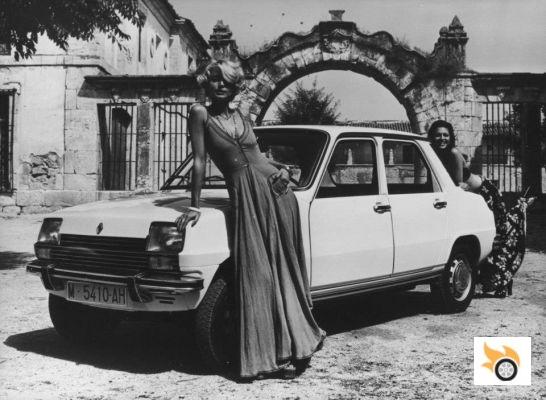
The model: quite a car
A Renault Siete is mechanically almost identical to the Renault 5, but it is not the same car. The width remains at 1.52 metres, but the platform is 10 centimetres longer, allowing greater comfort in the rear seats, which reinforces the family vocation of the car, which measures 3.89 m in total, 38 centimetres longer than the 5. Logically, most of this growth is in the third volume: an extraordinary boot with a capacity of 400 litres, with a curious little box at its base that takes advantage of the final curve of the chassis itself. But it's not just an added third volume: the R-5 and the R-Seven/7 do not share the wheelbase, nor the roof, nor the shape of the C-pillar and the rear window, nor the size of the wheels, nor of course the door layout, as well as having their own totally different interior finishes.
And even sharing with the Renault 5 all the front chassis, gearbox and clutch, transmissions, brakes, steering, suspension and even the windshield, not all loans were in the same direction, because in late 1979 the Renault 5 received the Spanish Renault Siete door scheme for the 5-door version, as a solution of perfect fit and accessibility.
The first Renault Siete also did not share engine with the 5 at the time of its launch, as a specific version of the Cléon-Fonte "Sierra" engine was launched, increasing its displacement from 956 cm³ to 1,037 cm³, just the limit to avoid reaching the fiscal 9 hp that would have meant paying luxury tax. The new engine thus went from 44 to 50 hp, and had a higher torque.
The Renault Siete weighed 815 kg unladen, and in addition to the chrome bumpers and door handles that gave it a classic look, it was fitted with 145-wide tyres on 13-inch wheels. Inside, its dashboard of elastic and enveloping material with stainless steel bottoms was of better quality than those of its brother the R-5, the instrument panel was larger and better designed and the seats were comfortable and the upholstery was of a good standard. Among the equipment, in addition, highlights the good rear visibility by the size of the window, the windows with descent in all four doors and the child safety system in the rear doors. In short, it more than lived up to its launch slogan: "A whole car".
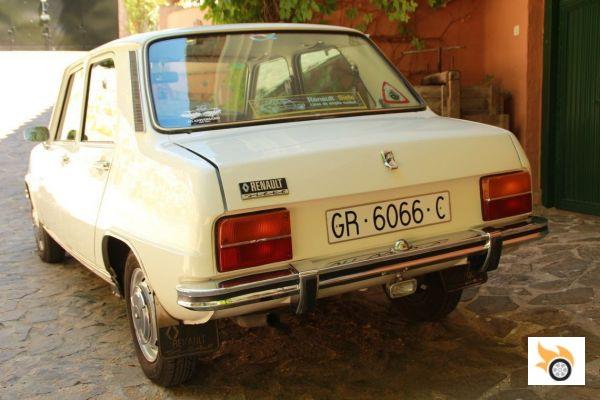
The versions
(I) The Renault Siete, the pioneer
In addition to the common characteristics indicated in the general description of the previous paragraph, among the equipment of this initial version include the unique rearview mirror anchored to the ceiling (as it did not bring mirror on the outside), the smooth doors without moldings and 4-inch wheels throat. As modest options, reclining seats and tinted windows; options that proved to be the majority because they raised very little the final price and were mounted on almost all units.
From 1974 to January 1976 a total of 15,264 units of this basic version, internally called R1283, were produced.
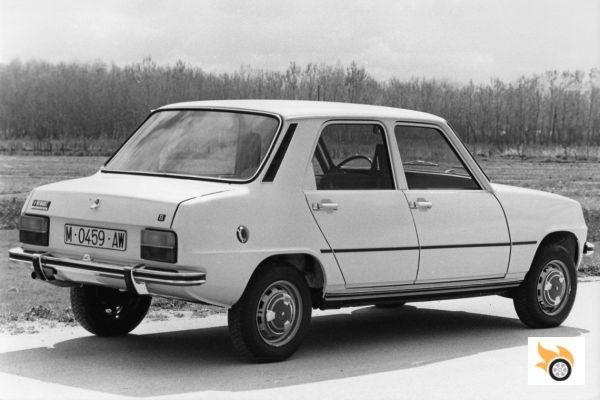
(II) Renault Siete TL, the best seller
In the autumn of 1975 (for the '76 range) the second version of the model went on sale: the "Renault Siete TL". Mechanically identical to its predecessor, it incorporated more equipment, which was necessary in order not to be left behind at a time when the Spanish car industry was evolving rapidly. The only changes under the hood were a slightly different camshaft and a slightly longer gearbox, making it quieter and slightly increasing the top speed.
The Renault Siete TL was notable on the outside for its chrome rear-view mirror and thin mouldings along the car's length. The width of the wheels grew to 4.5 inches, and incorporates as standard the windows slightly tinted green and reclining seats. Inside, the roof-mounted day-night mirror appears, as do the centrally mounted folding sun visors. The windshield wipers and climate control are now two-speed, and the rear doors have ashtrays.
In addition, in late 1977, began to incorporate orange front turn signals, to adapt to the new traffic regulations.
This was the most popular version of the model: between 1975 and 1978 a total of 84,248 units were produced, which means that more than half of the Renault Siete/7 manufactured are "Renault Siete TL".
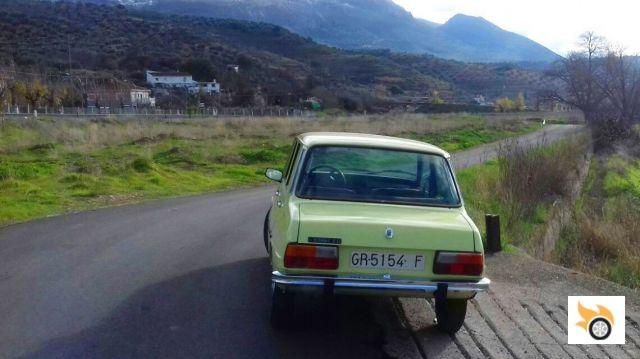
(III) The Renault 7 TL, at last a "Renault in its own right".
It is now autumn 1978, and with a view to the '79 Range, the model receives a major interior and exterior update. With the Siete - written in letters - being a sales success, the French Régie Renault wanted to welcome the great little Spanish car as its own son, and make it a fully-fledged Renault, with its place in the numerical series: the "Renault 7 TL" was born, at last written in numbers.
The mechanics were the same as its predecessor, the only change being the addition of the brake servo. In fact, the car retains the same internal code (R1283TL) as the Siete TL. But the aesthetic changes were noticeable. Up to 23 modifications were announced in the press of the time. Externally, the most notable were the large rear lights, which incorporated the reversing light, the wider side moldings and new smooth hubcaps. The bumpers lost their black center ribbon and the mascots became rubber. At the front, the front grille lost most of its chrome, and the outside mirror and windshield wipers became black. In addition, the underbody trim became a thin line of aluminum.
In the interior, among others, roll-up seat belts, a new dashboard (on the same base) and a new, more modern dashboard, a four-arm steering wheel and the inclusion of rear armrests with the ashtray incorporated. Between 1978 and 1980, 45,230 units of this version were produced.
(IV) Renault 7 GTL, the top of the range
In the summer of 1980, as part of a general change in the Fasa-Renault range, the 7 received a new 1,108 cc, 45 hp engine, giving rise to the "Renault 7 GTL" version, internally known as the R1287. The new engine, less powerful but more elastic, had a slightly lower consumption and stood out for its greater capacity for touring. The gearbox was also replaced by one with different developments. It was therefore a more appropriate version for a Spain that went from national roads to highways, and that makes even today the 7 GTL can be used normally as any other utilitarian of those who circulate daily.
Externally, the GTL is identical to its predecessor, except for a larger exterior rearview mirror and exterior badging. Meanwhile, the interior features new front seats with headrests, more refined upholstery and comfort details such as the cigarette lighter, the lever operation of the windshield wipers, emergency flashers or handbrake warning light. Next to the console there was also a radio cabinet (although there was no electrical pre-installation either inside the console or for the speakers in the passenger compartment).
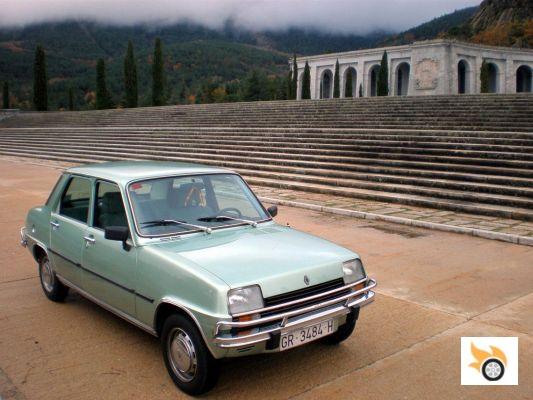
Towards the end of 1982, the last Renault 7 GTL left the factory in Valladolid. In total, 14,791 units were manufactured and were on sale until well into 1983. These brought the total production of the Renault Siete/7 to 159,533 units, a vehicle with excellent finishes that in its four consecutive versions reflected the evolution of the motorists of that time.
By the end of its commercial life, the change in the brand had been definitive: 1 out of every 3 cars registered in Spain was Renault, and its production was 20% higher than that of its competitor SEAT. At that time, Fasa's assets were valued at 207,132 million pesetas, and the company had multiplied its value by 10 in just 9 years, something incredible even in that context of galloping inflation.
The version that never existed: The Renault 7 TS
Apparently, according to the Ministry of Industry archives, Fasa Renault even presented the homologation for a TS version that would have been equipped with the engine and gearbox of the homonymous version of the R-5 (1,289 cm³ and 64 hp). However, this version, which was given the internal code R1286, was never produced, perhaps so as not to take the limelight away from the Renault 14, a car of a different concept but of similar size, which was also equipped with 1.2 and 1.3 litre engines, although of Peugeot origin.
Natural heirs of the Siete and conceptual heirs
The Renault 7, 12 and 14 were replaced in the brand's range by the Renault 9 and 11 in 1982-83. The segment of the Seven/7 was left empty at Renault, even though the R-9 is only 8 centimetres longer. However, 15 years later we have again seen a derivative of Renault's utility car, in this case the Clio II: the Symbol, Thalia or Clio Classic (depending on the market). In the Symbol the third volume has not been solved with the aesthetics and effectiveness that was done in the Siete/7, but still has achieved significant sales in South America and Eastern Europe, expanding markets similar to Spain several decades ago.
So much so that even the Dacia Logan (Renault Logan or Renault Symbol II in some markets) is, for its three-volume content and the use of mechanical and proven, a natural heir to the Siete/7 within the brand of the diamond, although bridging the gap because the projection of the Renault Siete/7 as a product responded to a more subtle and refined concept.
Outside Renault, the concept of utility converted to three volumes would still present in the Spanish market in models like the Opel Corsa TR and SEAT Cordoba, which managed to sell many thousands of units. Even today, the Citroën C-Elysée is a conceptual heir to the Siete/7.
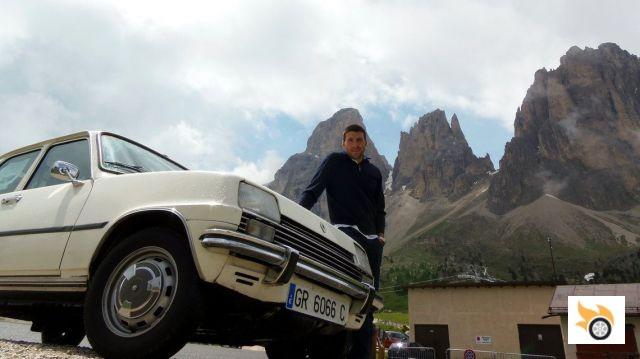
Passion for the Renault Siete/7: associationism
For the Spanish middle classes, the cars of the 60s, 70s and 80s were not just household appliances. They were the most visible product of their efforts at work, often their most prized possession, a means of contact between distant relatives - the village, the city - a symbol of freedom and even a way of expressing their personality.
Behind every car there was a story of overcoming, an individual story but at the same time shared with all those who, for one reason or another, bought the same model of car. The Renault Siete/7 is a paradigmatic case of this passion for cars. A markedly family car, many units passed from parents to children and even grandchildren with the imprint of being something achieved with effort, a "superior" utility car that deserves to be preserved almost as a family treasure. Obviously, this is not the profile of all car enthusiasts, but it is the profile of a large part of them. People from the four corners of Spain who realize that they have something in common besides an identical machine.
Thus, the 21st century is approaching, and thanks to new technologies, fans who had kept vehicles from that period of great development of the Spanish automobile industry find the opportunity to get in touch to share their passion. In the case of the Renault Siete/7, the first cyberspace was ACAR7 (Asociación Cultural de Amigos del Renault 7), a Yahoo! group, created on July 19, 2000 by Alejandro Pérez Alcalá. That was the place of the first contacts between owners and the first meetings at the Retromóvil fair in Madrid.
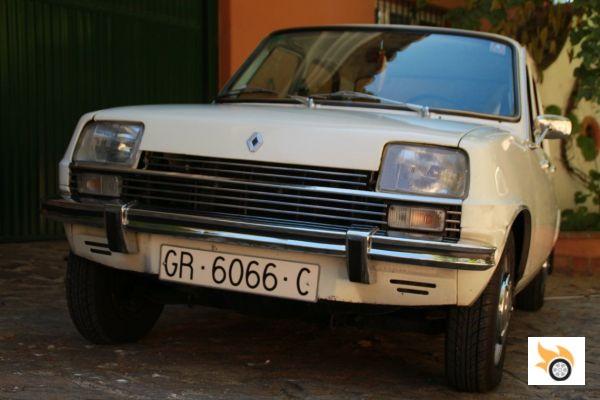
Years later, probably related to the mechanical similarities that facilitated the exchange of spare parts, arose in 2005 the Club Renault 4, 5, 6 and 7 of Spain, which organized several national rallies which did not miss the Renault Seven and 7. Subsequently emerged in 2008 the Club Clásicos Renault 3, 4, 5, 6 and 7, a spin-off of the previous one, and whose rallies also appeared Renault Seven and 7 owners.
However, the exclusive Spanish Renault deserved its own space in the motoring associations and networks, and so in mid-2010 and with the main impetus of Francisco Ramos Arias was created the Renault Siete7 Club, whose main means of communication are the forum www.renaultsiete7club.foroespana.com and the website www.renaultsiete7club.com.
This club, free for owners of the model and which already has more than a hundred members, became a meeting point for fans and the space where the greatest knowledge about the Renault Siete/7, an integral and representative part of the Industrial and Automotive Heritage of Spain, is preserved.
Since its foundation, it has already organized three national rallies: the I National Rally 2012 in Becerril de la Sierra, Madrid, with 15 participating units; the II National Rally 2014 in Elda, Alicante, an exclusive event that coincided with the celebration of the 40th anniversary of the presentation of the model in the port of Alicante and in which 22 cars participated; and the III National Rally in Granada, organized by member Antonio Gutiérrez last October 2016, with 26 participating units.
In addition, among others, the Renault Siete7 Club has participated in fairs such as Classicauto; in the activities commemorating the 40th anniversary of the model organized by Renault Spain; it has organized a solidarity rally against Amyotrophic Lateral Sclerosis; and various annual meetings open to all fans as the Nocturna Sie7era on the coast of Granada. An activity that continues, as the organization of the IV National Rally, to be held in Vitoria in 2018, is already underway.

























